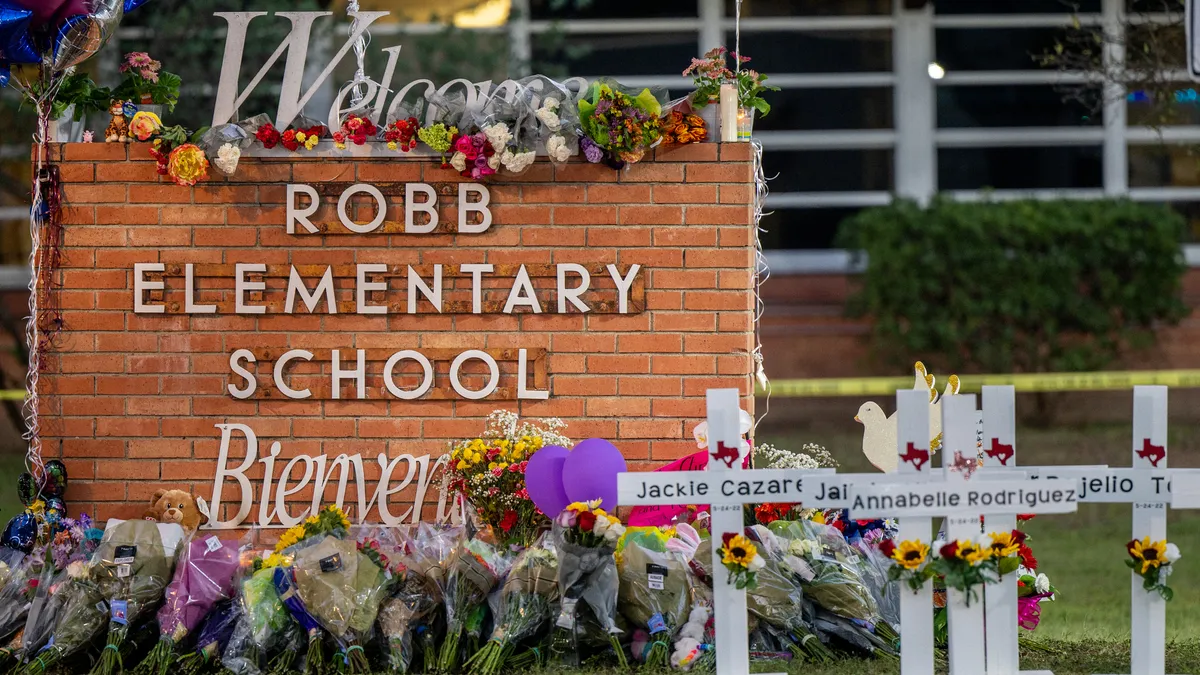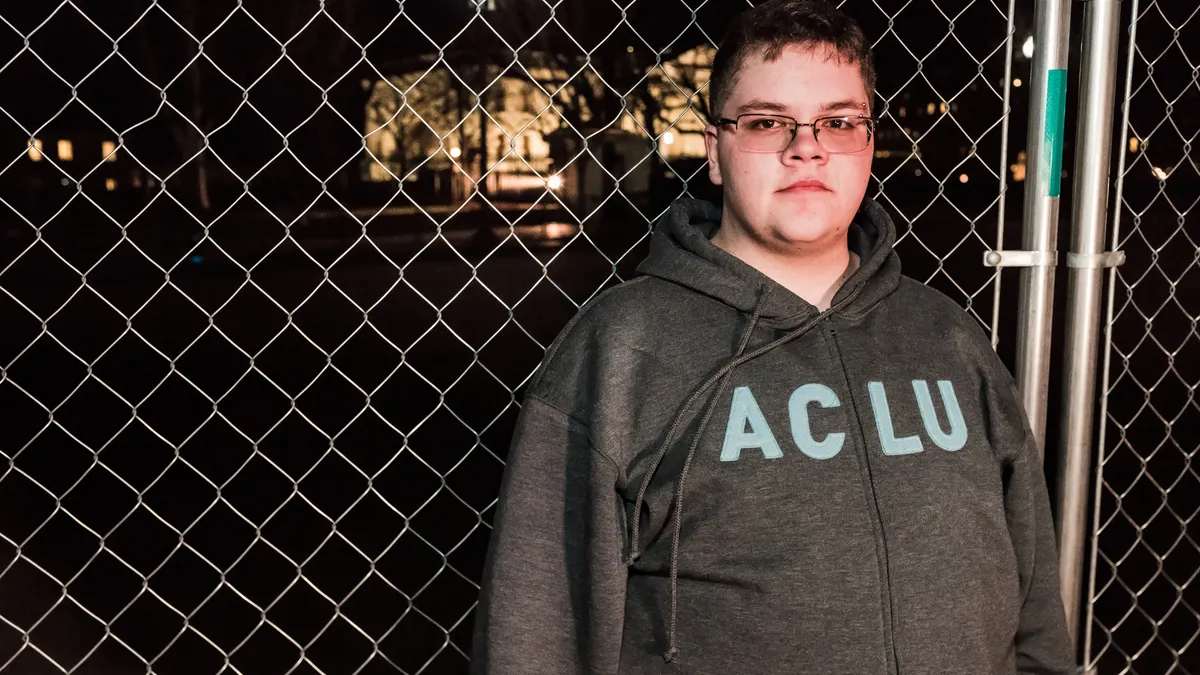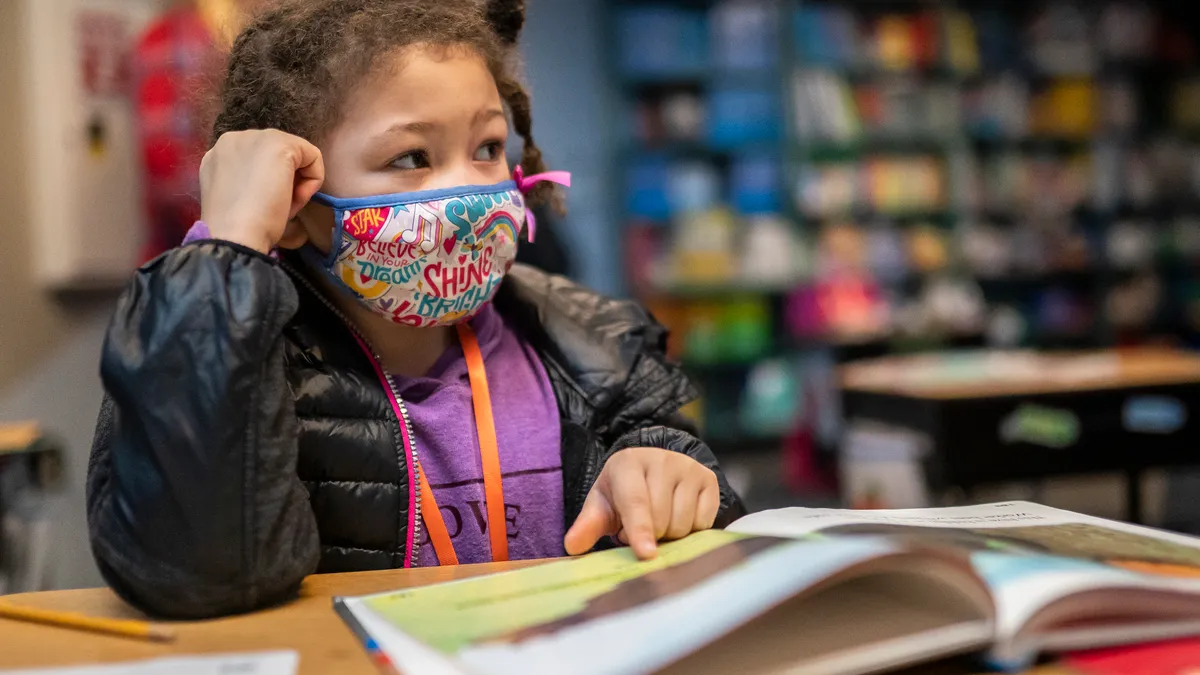Founded in 2007 by Harvard Business School professor Clayton Christensen and graduates Michael Horn and Jason Hwang, the Clayton Christensen Institute is a nonprofit think tank focused on taking its namesake's ideas around the concept of "disruptive innovation" from the private sector to the social sector. Its efforts, primarily, have been focused in education and healthcare.
A "disruptive innovation," is one that transforms a complicated, expensive product into one that is easier to use and more affordable than the one most readily available, often opening doors to outliers in the core product's audience.
"If you read TechCrunch or anything like that, basically any entrepreneur in the private sector will say they're 'disruptive,'" Julia Freeland Fisher, who recently took over as the institute's director of education, said. "We wanted to take what was a business theory and think about how does this actually apply to social sector innovation."
In education, talk of disruption has largely centered around online and blended learning, the latter of which being a particular focus of the Christensen Institute. But stepping into Horn's role, Fisher is also taking on some expansion into new areas around non-academic supports where tech might be able to make significant waves. Among them: Efforts to expand students' social capital.
We recently caught up with Fisher to discuss that work and the ongoing shifts across K-12 and higher ed, ranging from personalized learning and School 2.0 to MOOCs and alternative credentialing.
EDUCATION DIVE: I read that some of your current research is on expanding students' social capital, which is interesting because of the idea that who you know is just as important — or more important — than what you know.
JULIA FREELAND FISHER: Exactly. And that's like the whole premise of this project I'm doing. Everyone realizes when you get to the job market that networking and who you know matters, but the education system is sort of silent on that matter. You obviously have the luck of who you end up going to school with that may help you open doors, but we don’t organize students’ networks in a deliberate way from a young age, or even up through college. It’s sort of only when you go to the career office in college and there’s a list of alumni that you understand that there’s this idea of a network. I want to call out on two fronts, one, just the fact that we don’t tell kids this, and I think that’s a disservice. But from an equity perspective, the fact that we’re leaving this up to the luck of who you know through family connections or where you end up going to college, I think, is worrisome. And I think that the achievement gap conversation has gotten us a long way around content and skill gaps, but it’s ignoring this piece around networks.
That made sense for many decades, because, logistically, it’s really hard to connect kids to people who are outside of their communities, but that’s where I think technology changes the game entirely and we don’t have the excuse of logistical barriers anymore.
Of course, we know that K-12 and higher ed have totally different business models, but what we’re seeing in higher ed is that alumni have always been a part of the business model from a giving perspective, and so schools are sort of perking up to the idea that technology could make that sort of cultivation more efficient. That’s promising. It’s a good way to reach your alumni, but are you also using that to the advantage of your students and expanding who they know. There’s one tool called Alumnifire that I learned about a few months ago that I think is taking an interesting tack. They get in the door with universities because they can offer something that helps with cultivating donors, for lack of a better word, but it’s also quite quickly giving students visibility and actual contact with alumni that they otherwise wouldn’t have.
Back in my day, there were lists and email addresses, but it wasn’t a concerted part of your education experience that you would tap these people and you also weren’t necessarily building networking skills as part of your experience.
Going back to K-12, it’s a completely different business model and set of challenges. I think we’ve always known that mentoring was a good thing, but it was really hard to scale, so it would always be like an afterthought, an after-school type of thing. And now we have a chance to kind of bring it into the mainstream a little bit.
In K-12, with the push toward School 2.0 — the move away from the “industrial” or “factory” model of education of the past century — what do you think some of the biggest struggles are for schools?
FISHER: I’ll give a really narrow example and then try to extrapolate a larger principle from that example. I did a year-long study looking at New Hampshire, which is being touted as one of the states pushing the furthest in this 2.0 model because they got rid of the Carnegie unit, which sort of kept all of the courses that we took as kids on the clock and we progressed in a lockstep fashion.
What’s happened in New Hampshire, interestingly, is they lifted the barriers to innovating around seat time and what have you, but two things were still around. One was status quo bias — “This is how we’ve always done business, so why should we change?” — and the other was, frankly, federal policy and other interlinking policies that really do reinforce the status quo. The fact that you once yearly sit down and take a high-stakes test actually creates a time-based system for the other 364 days of the year. Everything has to sort of organize around that one date.
Unsurprisingly, that has really limited the ability to depart from our factory-based system, because we’re actually still using the old yardstick to measure accountability and success. Until we have a different yardstick and different metrics and we’re really homing in on individual student growth, schools could be really willing to innovate and still be stuck in the same old box.
Something separate we’re seeing in the ed tech industry is, yes, we have technology that is incredibly promising to adapt and plug into these blended learning models and that could really radically change pedagogy, but the ed tech market is so fragmented right now. I think the best-kept secret in ed tech is how not integrated the tools we’re using are. In theory, it would be very tidy if you and I went into a class and we worked on different tools and we were assessed at different rates and the teacher could see all of that clearly. In practice, you actually have a lot of human labor going into processing that data and trying to do something new pedagogically. That’s a technical barrier that we need to face head-on a little more than we have — it’s not just about getting more apps on the market, it’s how are they going to talk to each other.
With that shift, I’ve also read recently that the danger of thinking of “personalized learning” as a product instead of a method has come into focus.
FISHER: I love that because I was at a conference a few weeks ago where I was like, “You can’t just take it off a shelf,” which is how people are talking about it. We still have to actually agree about the purpose of education. You actually have to figure out the outcome that you’re talking about. And the temptation, because we’re all in search of the silver bullet in our education system, is to go straight to inputs and go straight to a prescriptive “this is what a personalized learning classroom does” or “this is what a product does.”
That’s where I get to the yardstick and the metrics piece. Until we adjudicate what the metrics of a personalized learning system are, we’re gonna be doing all sorts of things and calling them personalized learning. This conversation could be personalized learning. [laughs] It’s to the point of absurd.
It feels like we’re leapfrogging the “how we’re going to get there” a little bit, and it feels like a frighteningly capacious term. The field needs to be disciplined about what success looks like and then let schools or school systems individually innovate toward that vision of success.
Do you think the Every Student Succeeds Act will help in lifting the barriers to innovation?
FISHER: ESSA obviously lifts barriers to innovation, especially around assessment — which is incredibly exciting. States can use individual measures for student growth now, adaptive assessment, multiple measures, and all the stuff that I think is gonna actually get to a new yardstick that I was talking about. The fear, of course, is that lifting barriers to innovation doesn’t ensure that innovation happens. It’s not so much that I’m worried that there’s not enough space, it’s more who’s going to take advantage of it and how are we going to ensure that happens in an equitable way.
It’s tricky to predict right now. We know which states are moving in this direction already, but it literally does open up a window of opportunity for assessments that we don’t even know about yet.
In higher ed, with research finding that MOOCs — once seen as a disruptive force — largely benefit more affluent, educated users than the underserved population they were meant to expand access to, do you think they still have the opportunity to do so?
FISHER: We actually never thought that MOOCs were disruptive. The fact of the matter was that, although they were affordable because they were free and they, in theory, allowed access to lectures that people otherwise wouldn’t have had access to, they had no business model behind them. There was actually no kind of credentialing mechanism that would give a MOOC currency in the labor market that would then lead people to buy premium versions of them.
We had our eyes on a very different trend, which was online competency-based education programs that, in some ways, look a lot more traditional than a MOOC. There’s tuition fees and there are modules, even if they’re not courses. But the difference is that rather than digitizing the lecture and offering it for free, it was offering a different learning experience that was more flexible time-wise and more affordable, and that employers actually valued from a credential perspective.
I actually think those programs are actually much better suited to the population that you’re talking about, because they structurally and philosophically have managed to focus on skills that you need to get into the labor market, which is what we need to be focusing our higher ed efforts on — particularly for lower-income students who are otherwise saddled with debt.
With the Ed Department allowing partnerships between traditional institutions and alternative credentialing providers, do you see those institutions creating their own in-house programs for those credentials similar to the way they adapted the online model popularized by a lot of for-profits?
FISHER: It’s problematic to think of whether we can traditionally accredit nontraditional institutions, because the accreditation system was not built with those institutions in mind or any of the flexibility that they afford students. I think that we have to think about alternative accreditation methods down the line. Part of that is not just accreditation in the way that we think of the rubber-stamping, check-the-box accreditation process, but really thinking about looking into the future with these more-flexible learning experiences and the expanse of students we’re trying to define with them.
How do we define quality and hold institutions accountable to quality? That’s the first step we should be pushing on. Gainful employment was obviously a step toward that, but thinking about cost-benefit analysis — not just [whether] your students are gainfully employed, but relative to how much they invested in their post-secondary experience. Is it paying off? Cost-sharing arrangements with employers — all of those can get at a new vision of quality that’s modernized to the current ways we’re thinking about learning and credentialing.
Will existing institutions take these on? We’re already seeing a couple of interesting experiments there, some of them we’re still waiting to see whether they succeed. Southern New Hampshire obviously formed College for America, which is its own online, competency-based, separate wing. Its brick-and-mortar students are having a very different experience than students enrolled in College for America. They really protected College for America as an autonomous unit and let them build something different that wasn’t beholden to the old business model.
If you’re an existing institution, that’s really critical, because otherwise, you’re basically going to try to jerry-rig something new into the old business model, and you’re probably not going to succeed in actually fomenting the disruption that these new entrants are pursuing.
Nick Ducoff is running Northeastern’s attempt to create alternative business lines within the college. He’s trying to carve out those autonomies, and they’re creating a dev bootcamp — the stuff we’re hearing about outside of the traditional institution, they're trying to bring that in.
So yes, I think we’re hearing across the country that — whether it’s creating these bootcamp experiences or an online competency-based offshoot — traditional institutions are perking up to those possibilities. The question we ask, from a sustainability perspective, is are you creating a separate business model to run those programs, or are you trying to shove it into your existing and, frankly, broken business model? The latter is not going to serve you as an institution, but it’s also going to be a disservice to students because you won’t actually be able to prevent the hikes in tuition that these alternative programs are designed to deliver on.
Would you like to see more education news like this in your inbox on a daily basis? Subscribe to our Education Dive email newsletter! You may also want to read Education Dive's look at 5 steps to create successful competency-based education programs.


















